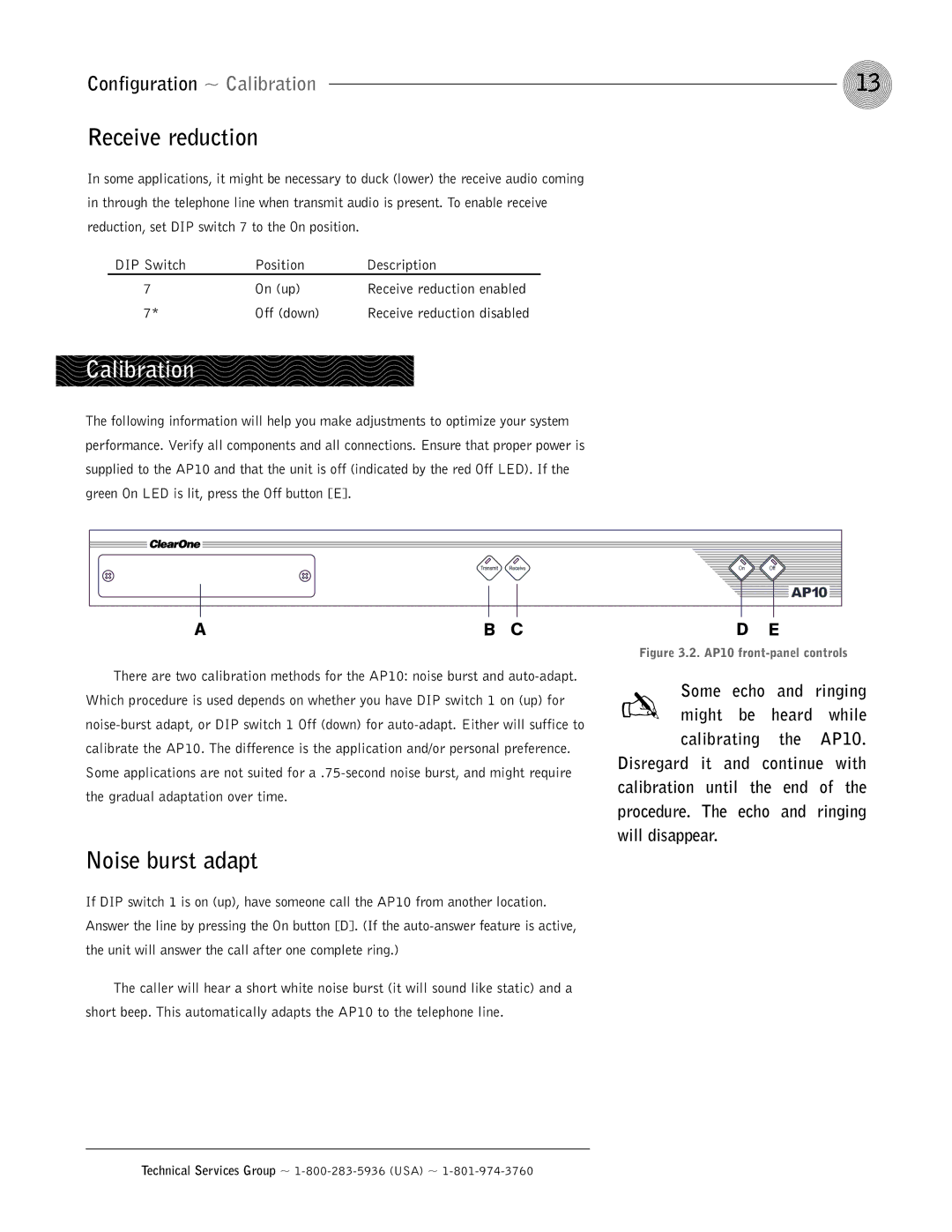
Configuration ~ Calibration | 13 |
Receive reduction
In some applications, it might be necessary to duck (lower) the receive audio coming in through the telephone line when transmit audio is present. To enable receive reduction, set DIP switch 7 to the On position.
DIP Switch | Position | Description |
7 | On (up) | Receive reduction enabled |
7* | Off (down) | Receive reduction disabled |
Calibration
The following information will help you make adjustments to optimize your system performance. Verify all components and all connections. Ensure that proper power is supplied to the AP10 and that the unit is off (indicated by the red Off LED). If the green On LED is lit, press the Off button [E].
AB C
There are two calibration methods for the AP10: noise burst and
Noise burst adapt
If DIP switch 1 is on (up), have someone call the AP10 from another location. Answer the line by pressing the On button [D]. (If the
The caller will hear a short white noise burst (it will sound like static) and a short beep. This automatically adapts the AP10 to the telephone line.
| D | E |
|
Figure 3.2. AP10 | |||
Some | echo | and | ringing |
✍ might | be | heard | while |
calibrating | the | AP10. | |
Disregard it and continue with calibration until the end of the procedure. The echo and ringing will disappear.
